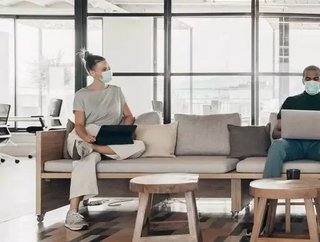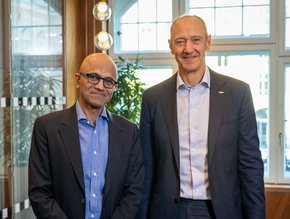Accenture: five actions to help get back to work safely

In this extraordinarily challenging time, we’ve all had to adapt to far-reaching changes in the way we live, consume, work and socialize. Companies have had to act quickly and decisively to support their people, help communities fight the pandemic and ensure their businesses come through the crisis stronger.
As economies and societies begin reopening, a new set of challenges is emerging. Manufacturers face the need to balance ramping up operations while ensuring the mental and physical health and wellbeing of their workforce. No-one should pretend this will be easy. It will require exceptional flexibility, resilience and resourcefulness – particularly because most markets will likely experience cycles of opening and closing until a vaccine has inoculated a critical mass of the population.
These are the realities of the post-COVID world, a world in which the ability to manage and capitalize on uncertainty has become a massive strategic differentiator.
How is your business creating and executing a physical distancing strategy that allows people to be productive and feel safe? With broad consensus that we won’t go back to life as we knew it, how are you addressing fundamental questions about how your business should reset and renew for the new reality?
As manufacturers endeavor to get their people back to work safely, consider these five actions:
- Maintain your COVID-19 command center. Use this resource to continue providing centralized coordination until your workforce is fully comfortable operating in the new era – a transition that could take a while. Leverage the initiatives and structures you created to deal with immediate COVID-19 challenges to help manage a staggered return to work and a regular cadence of employee communications.
- Keep taking ‘pulses.’ As government mandates evolve, some people remain anxious about returning to offices and crowded public spaces; others are resistant to new safety measures. As you plan, don’t get ahead of your employees or customers. Continually take their ‘pulse’ by talking to them, actively listening to what they say and guiding them to make responsible choices. Accenture research suggests that in most organizations, 20% to 30% of people will be particularly concerned about this transition. Identify them and stay close.
- Redouble your commitment to responsibility. Decision-making is increasingly being pushed to individuals and businesses – making the next phase of the crisis a litmus test for corporate behavior. Indeed, in an Accenture CXO global survey (fielded in June and July 2020), 49% of CHROs said that the COVID-19 crisis will impact responsible practices aimed at improving the societal value for consumers, employees, business partners and communities, such as inclusion and diversity. Become an ‘emotional enterprise’ by focusing on your purpose and your contributions to the greater good.
- Increase workforce resilience. The crisis has reminded us that companies are only as resilient as their workforce. Those that maintain a safety net of adaptable workers will be better prepared to ride out future shocks.
Be prepared to quickly redeploy people to areas of high demand. Review your training programs to ensure they’re upskilling the workforce for the demands of the future. Carefully prioritize who in the business needs to travel internationally and update HR and travel policies accordingly. Accept that home working, video-conferencing and remote collaboration are likely to become permanent features of your operations. Rethink how time management, performance monitoring and career progression need to change for this more physically dispersed workforce.
Just as important, consider making temporary resilience boosting policies – such as paid sick leave – permanent whilst going beyond mental health awareness to offer services that tackle root-cause issues.
- Prepare for physical reopening. Consider what personal protective equipment (PPE) your workforce needs and how you will enforce its use. Think about how to communicate hygiene and social distancing rules onsite, as well as when to offer body temperature measurements. Establish guidelines for face-to-face meetings, including seating arrangements and handwashing before and after. Be prepared to rethink and restrict the use of shared spaces and canteens, and reorganize supplier and postal deliveries to minimize physical contact.
Digital technologies can play a key role in ensuring safety throughout your return to work. By creating a “digital twin” of the workplace, for example, it’s possible to simulate and test layout configurations. Use those simulations to assess how well people would be able to comply with social distancing rules, particularly in high-risk areas, such as canteens, sanitary facilities and meeting rooms. In addition, consider whether you want to deploy ‘safe worker’ apps and temperature monitoring facilities to alert workers when they’re breaching proximity limits and to detect areas of overcrowding in the workplace in real time.
By taking these five actions, you will better position your company to manage the uncertainty of the coming months and ramp up and renew your operations – all while ensuring your people stay safe and well.
For more information on business topics in Europe, Middle East and Africa please take a look at the latest edition of Business Chief EMEA.
Follow Business Chief on LinkedIn and Twitter.
Oliver Wright, global lead Consumer Goods & Services, Accenture
Eva Sage-Gavin, global lead Talent & Organization / Human Potential practice, Accenture






